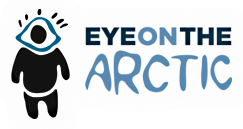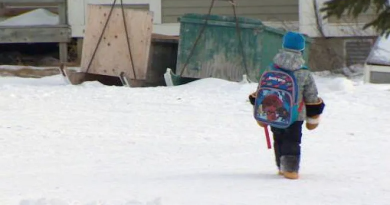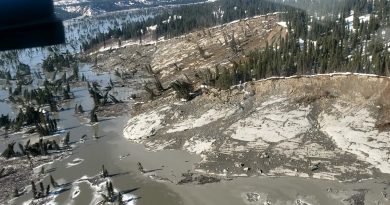Analysis: For the Yukon’s premier-designate, the expectations start now

The list of problems Currie Dixon’s government will be expected to tackle is long and complex
Don’t feel too badly for Currie Dixon and the Yukon Party.
After all, they got what they had been seeking for nearly a decade: a return to power as a majority government.
In the end, it wasn’t particularly close. The Yukon Party won 14 seats and almost 52 per cent of the vote. Unlike 2021, where the Liberals and the Yukon Party finished tied with eight seats apiece, despite the Yukon Party winning the popular vote, there is no question about mandate.
The Yukon Party has a clear one and they will be expected to act.
But the list of issues to tackle is long: health care provides its own sub-list of complex problems to untangle, as do housing, crime, the toxic drug crisis, mining and energy.
One area where the new government will not struggle, at least initially, is finances. The Yukon is solvent, with a projected budget surplus of $133 million.
The territory’s debt load, though it appears alarming at nearly $700 million, is actually quite modest. It sits at about nine per cent of GDP, which compares quite favourably to most of the world: Canada’s is 111 per cent and the United States’ is 121 per cent.
The Yukon also faces the same advantage as the other territories of being more or less a fiscal ward of the federal government. Ottawa pays about 85 per cent of the Yukon’s bills.
All this is to say that barring any radical changes to the federal government’s Territorial Formula Financing regime (which is never out of the question), any austerity the Yukon Party might impose would be a choice, not a necessity.
Liberals collapse
For the Liberals, Monday’s result is nothing short of a disaster. Leader Mike Pemberton was soundly demolished in his own riding of Whitehorse West and the party is reduced to a single seat.
And while Pemberton said he plans to stay on as leader at least until the party’s annual meeting in January, the Liberals face internal divisions and an exodus of talent that will require a gifted leader to overcome. Pemberton is likeable but unsteady, and it’s reasonable to ask if he’s the guy to do that.
To be fair, the Liberals have come back from oblivion before. Former premier Sandy Silver eventually managed to rebuild a party that self-immolated during Pat Duncan’s one-term government at the turn of the century.
But that process took 15 years.
NDP disappointment
For the NDP, the election results will come as a disappointment, but it can’t be a huge surprise. The New Democrats were up against the Yukon Party’s highly effective political machine. But they also committed some unforced errors.
The NDP’s decision to focus on health care made sense, but the move away from leader Kate White’s image as a joyful warrior to run a doom-and-gloom campaign against the Yukon Party seems like a misstep.
Still, Monday’s results are a good showing for the NDP. White’s caucus adds five new faces and will form the official opposition.
The party also broke through in some new places: Linda Moen finally captured Mountainview, a seat the NDP has always done well in but never won, and Brent McDonald pulled off a major upset by winning Klondike. It’s first time the NDP has won there since 1989, though McDonald no doubt got a major boost without a Liberal candidate to compete against.
But it’s now almost 30 years since the NDP have formed a government in the Yukon. If they want to return to power they’ll have to work on themselves and hope the Yukon Party stumbles over the next four years.
Cabinet questions remain
To that end, much depends on the makeup of cabinet for Dixon’s new government.
Dixon faces a classic good problem to have: vastly more MLAs than he has cabinet positions to offer. The daunting knot of policy problems the government will have to untangle means new ministers will have to be sharp. Expect to see a mix of old faces and new.
But the old guard in the Yukon Party caucus should not consider themselves shoe-ins. Reviews of long-serving MLA Brad Cathers’ time in cabinet were decidedly mixed, while former environment minister Wade Istchenko is still wearing his involvement in an ugly text messaging scandal from 2021.
With that in mind, newcomers such as Jen Gehmair, Ted Laking and Linda Benoit, Dixon’s one-time leadership rival, could prove more attractive as cabinet options.
Whatever the precise makeup of cabinet, the Yukon Party will have likely five or six backbenchers to keep occupied with something substantive.
That could be a little easier since some of the party’s older faces have moved on. This Yukon Party slate is younger, more female and more diverse than past ones and this edition of the party seems more disciplined that previous iterations.
Dixon is a shrewd political operator who kept his focus during the campaign. But once you take power, reality tends to test that focus.
Change starts now, sure, but the pressure to solve some thorny issues is soon to follow.
Related stories from around the North:
Canada: Federal budget delivers $1B Arctic Infrastructure Fund, though future of some social programs unclear, CBC News
Greenland: From MMIWG in U.S. & Canada, to Greenland’s IUD scandal, Inuit women’s summit says ‘no more’, Eye on the Arctic
Finland: Finnish Lapland saw biggest 2024 tourism increase, Yle News
Norway: Norway, UK team up to protect subsea infrastructure against Russian hybrid attacks, The Independent Barents Observer
Russia: Putin in Arkhangelsk: Arctic industry and infrastructure on agenda, The Independent Barents Observer



